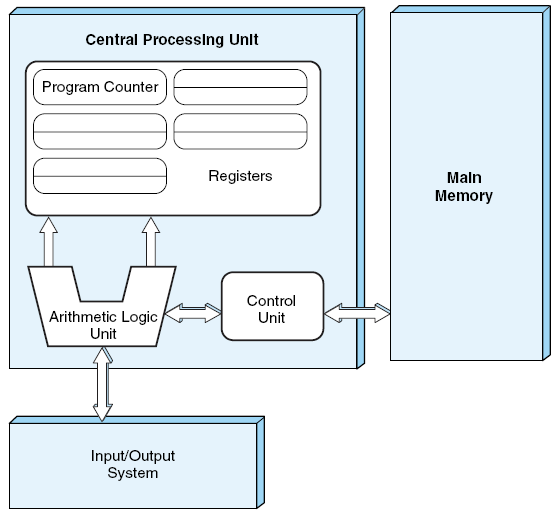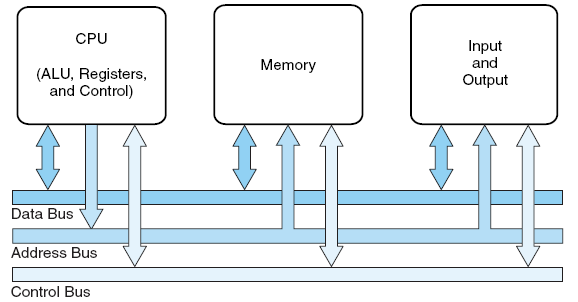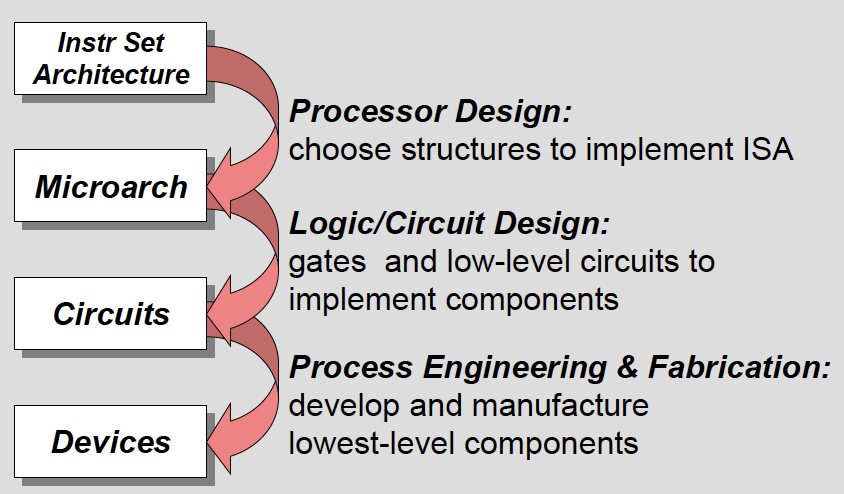Title: What-is-a-Computer
Author:
- AllenYGY
status: DONE
dg-publish: true
tags:
- NOTE
- CO
- Lec1
created: 2023-11-03T00:59
updated: 2024-06-14T17:12-
Definition:
- electronic, digital, general purpose computing machine that automatically follows a step-by-step list of instructions for solving a problem.
- This step-by-step list of instructions that a computer follows is also called a computer program.
-
Computer Part: case, motherboard, CPU, RAM, power supply, hard drive, graphic cards.
Turing Machine
-
In 1936, British mathematician Alan Turing developed a hypothetical device, the Turing machine, which is the abstract model of all computers
-
A Turing machine consists of
- a tape divided into cells
- a moving read/write head
- a state register storing the state of the Turing machine
- a finite table of instruction specifying what the machine does when reading the content of the current cell:
- move right/left; erase/write a symbol; change the state
-
All things that can be computed can be computed by a Turing machine
Universal Turing Machine
- Turing described a Turing machine that could simulate all other Turing machines.
- inputs: data + a description of computation (Turing machine)
- A computer is a Universal Turing Machine!
Historical Development
- Generation Zero: Mechanical Calculating Machines (1642-1945) 机械计算机
- The First Generation: Vacuum Tube Computers (1945-1953) 真空管计算机
- The Second Generation: Transistor Computers (1954-1965) 晶体管计算机
- The Third Generation: Integrated Circuit (IC) Computers (1965-1980) 集成电路计算机
- The Fourth Generation: VLSI Computers (1980-) (very large scale integration computer)
The von Neumann Architecture
-
stored-program architecture
-
Both data and program are stored in the memory
-
A Central Processing Unit (CPU)
- Control unit 控制单元
- Arithmetic Logic Unit (ALU) 计算逻辑单元
- Registers
- IR: Current Instruction
- PC: store the address of next instruction
-
Main memory
-
I/O- system
-
a single path between the main memory and CPU, called the von Neumann bottleneck

Von Neumann Execution Cycle
- Fetch-decode-execute cycle
- the control unit fetch the next instruction from the memory 控制单元取指令
- the instruction is decoded into a language that the ALU understands 解码
- data operands are fetched from the memory into the registers inside CPU 从内存获取数据操作数到寄存器
- the ALU executes the instruction and places the result into the registers or memory 计算逻辑单元执行指令并把结果放到内存或寄存器
The von Neumann Bottleneck
- CPU and memory are separate
- All data and code are in the memory
- CPU is usually faster than memory
- CPU is forced to wait for needed data to be transferred to or from memory
The system bus model of the von Neumann Architecture

Levels of Abstraction
- User level: applications such as qq.exe app
- High level language: C, Java, C++ program language
- Assembly language
- Operating system
- Machine Language: Instruction Set A
- Control level: micro-code or hardwired
- Digital logic: circuits, gates
Levels of Transformations


- Problem -> Algorithm -> Program -> Instr Set Architecture -> Microarch -> Circuits -> Device
The Machine Levels
- Instruction Set Architecture (ISA): instructions that a CPU can execute
- Microarchitecture: implementation of ISA
- Circuits: Details of electrical circuits
- Devices (transistors): Circuits are built by interconnecting transistors
- Bits: Transistors operate on bits (“0” or “1”) that represent data and information
Hardware VS Software


- Whatever can be done by hardware can also be done by software, and vice versa
- Hardware implementations are faster but fixed
- Software implementations are more flexible but slower
Table Of Contents